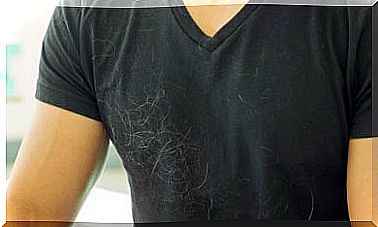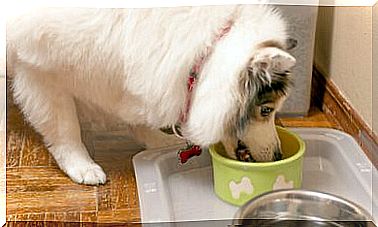How Do You Remove Tartar From A Dog?
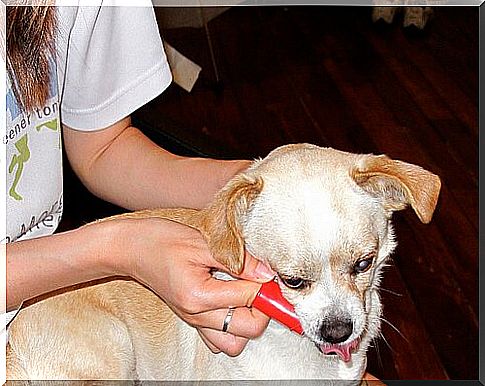
Oral hygiene is often neglected in dogs, but it is very important! Poor oral health can lead to infections and other health ailments. So today we’re going to show you how to remove tartar from a dog.
Tartar In Dogs?
As with ourselves, bacteria and residues accumulate on dogs’ teeth, which form plaque. When minerals from the saliva are stored in the plaque , tartar is formed .
This can lead to inflammation of the gums, which can also result in tooth loss.
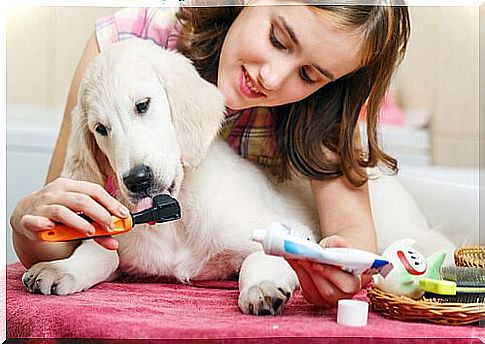
Tartar can no longer be removed with brushing your teeth or specific foods. In this case, treatment by the vet is necessary, so it is best to prevent it from getting that far.
However, some breeds are particularly prone to this, so you should keep these in mind:
- Small breeds, especially toy dogs. Their teeth are weaker than those of other races. They have small teeth that are densely packed, so general oral hygiene is more difficult. As a result, tartar develops faster.
- Dogs with brachycephaly, that is, short-headedness. One of the consequences of this hereditary deformation of the skull is that the teeth are closely arranged and difficult to clean.
- Dogs over the age of 5 are also prone to tartar build-up, especially if they haven’t had regular dental hygiene before that.
What Are The Consequences Of Tartar In Dogs?
Infections and diseases can develop, the most common complaints include the following:
- Halitosis (bad breath). As already mentioned, tartar is the result of poor oral hygiene, which is why there is also bad breath odor. This is very unpleasant, the smell is often noticeable from a certain distance. Even if the bad breath is caused by tartar, it could have other consequences. The dog must also be checked for other oral diseases by a veterinarian.
- Gingivitis (inflammation of the gums) can be recognized by reddened, swollen gums. The teeth are further apart, because the gums shrink and can also become loose or fall out.
- Periodontitis is also inflammation of the gums, but it leads to the destruction of the periodontium. This dental disease is accompanied by bad breath and gingivitis. In the worst case scenario, teeth may fall out or the dog’s eyes and nose may be infected!
- Tartar can also result in various other infections that are serious and can, for example, attack vital organs such as the heart, kidneys and intestines.
How can you prevent it?
You now know the importance of preventing tartar build-up in dogs. But how can you take precautions? You will then find various tips:
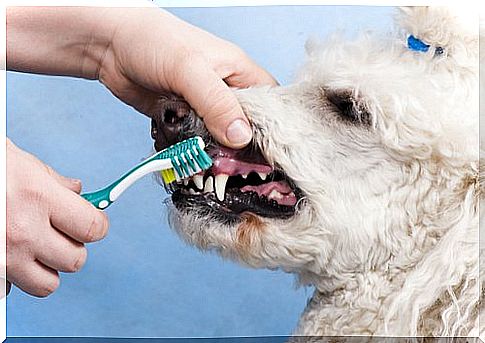
- Daily brushing of your teeth. Just as you brush your teeth 2 to 3 times a day, you should think of your pet and clean his teeth once a day. It takes time, but it’s worth it. Use a toothbrush and toothpaste specially designed for dogs.
- Special chews can also be very useful in preventing tartar build-up. See your veterinarian for advice.
- When the general health of your four-legged friend is good, their dental health benefits too. Feed your fur nose healthy so that it doesn’t lack any nutrients. Make sure you get enough exercise!
Start with the prevention of tartar early so that it doesn’t get that far in the first place. Your dog will stay healthy that long.



